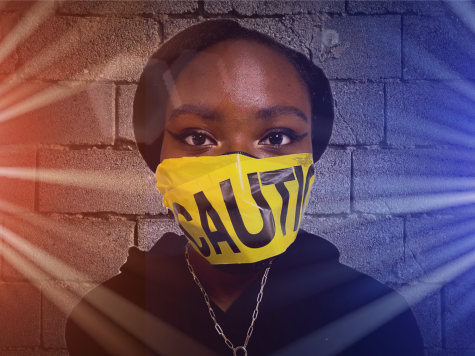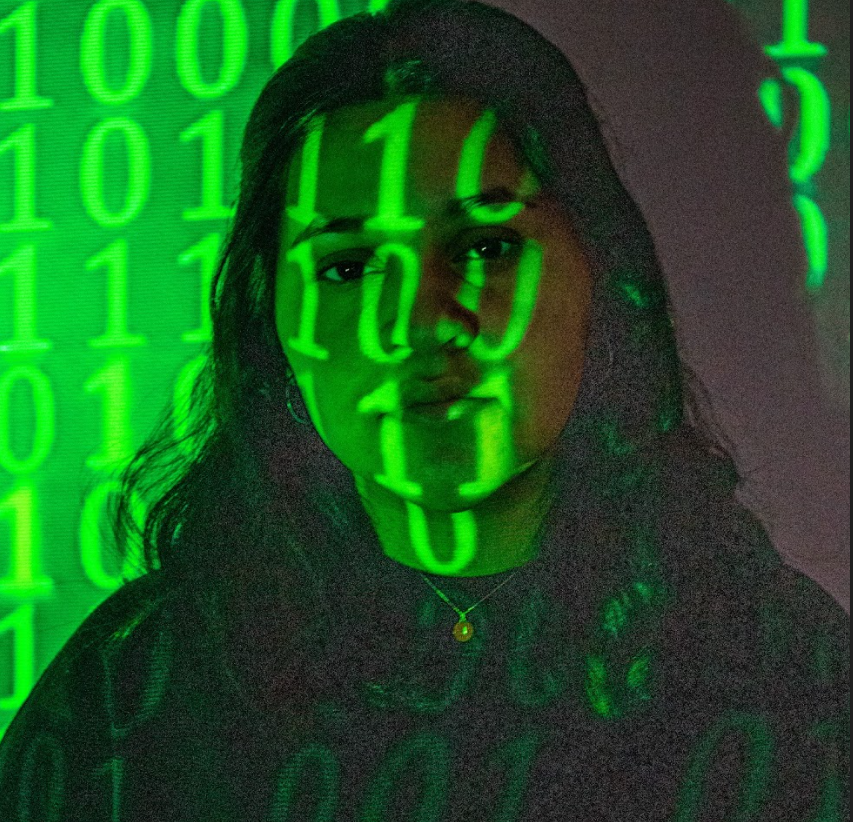Following your digital footprint
Whether it is for business, entertainment or personal socialization, many young people share their lives on social media. As the world becomes increasingly digital, young people must make conscious choices about what they put on the internet and be aware of the implications.
January 21, 2022
Repeated internet threats disrupt school safety
For the 2021-2022 school year, multiple threats have been made against the safety of the school environment that got the attention of administration and the Downers Grove Police department.
The past month or two have been stressful for all those inside high school buildings throughout Illinois due to the increased number of social media posts threatening the safety of the school.
This uptake in threatening content puts everyone inside high schools on full alert and creates a buzz around the school on what should and shouldn’t be done. After extensive analysis from administration and local police, it was found that the posts weren’t connected to one particular school; however, many were still uneasy.
DGS principal Edward Schwartz weighed in on how we as a school have been keeping the building safe despite recent concern.
“Everything we put in place safety wise we almost always consult with the police and work with them. We have our resource officer here [who] works with the people back at the station,” Schwartz said. “Anytime there is any unrest or people feeling uneasy about safety I always ask [the security staff, and administration] to be more visible… to be reassuring that way.”
This positive initiative taken by administrators has created a sense of calmness around the building that senior Tijay Patel has noticed, especially on the day the shared threat was supposed to occur.
“I personally attend school on the days of the threats. Our school has a very good security system, and it’s a safe environment… I didn’t feel like anything was different on those days because every day [the security] does a good job monitoring the school,” Patel said.
Many parents have also either noticed or heard about these same threats. No parent wants to put their child in harm’s way; however the decision to either send, or keep their child home from school due to a threat can be a controversial topic. Parent Janet Steele trusted the plan Schwartz, and the rest of the administration, put in place with the help of the Downers Grove Police department.
“I sent my kids to school because the message received from Downers Grove and CSD99 was because the threat did not specify that South was being threatened and was just a general threat that someone posted… If there was ever a question of the safety of my kids, I would always protect them first and foremost. It seems the hoaxes and threats have always been out there but with social media now, we hear about every little thing. You just have to make decisions of what is best for your family,” Steele said.
Even though most of the families inside the building trusted the school’s decision, Associate Principal Karen Taylor stated that 128 parents called the attendance line citing that the school threat was the reason for their students’ absence.
As we kick off the new year and second semester of the school year, it will be important to continue to stay alert to any possible school threat that could be made on social media and continue to take appropriate action.
Social media: An emotional landfill
Many young people have participated in trauma dumping– a recent trend of sharing highly personal information and traumas on apps like TikTok.
Aside from the physical dangers that are present through social media, damages could also be a danger to your emotional state.
For example, you are scrolling through TikTok and you see a video of a father-daughter duo practicing the latest dance trend. You open the comments expecting to see an outpour of adoration for the family, but instead you see that the top comment is “must be nice to have a dad.” This is trauma dumping– a newly coined phrase to describe unwarranted sharing of deeply personal issues.
This is a phenomenon that has become more prevalent on social media over the last few years, and some people are concerned. DGS counselor Kate Blader shared why she thinks young people are drawn to this practice.
“The internet, a screen or your phone gives you a barrier from the real world, so sometimes people forget that what they say is being heard by real people on the other end,” Blader said.
She is concerned about the consequences of sharing too much online.
“Sharing traumatic experiences on social media can be dangerous, and we would hope that students would share their traumatic experiences in an appropriate manner and in a time in place that makes sense so that they can be heard by the right people and get the help that they need. That might include staff members at school, family members, parents or other trusted adults,” Blader said.
Blader does not disregard the positives of social media although she worries about the effects of oversharing.
“We saw this in the pandemic that social media connects people in such awesome ways, so I think that there’s lots of great ways that you can share what you are about and what your life is on social media. I just think that it’s important to try to connect with people you actually know and use social media as a means to communicate rather than a way to escape the real world, but rather to connect more deeply with people,” Blader said.
Senior Kylie DelRe echoed this opinion and expanded on the experience of being on the receiving end of this unsolicited sharing.
“I’ve had friends go on rants about things that are upsetting to them and just wear all their emotions on their sleeve. And that’s not a bad thing, but it does make me a little uncomfortable because I’m empathetic, and I want to support people in any way I can, but on Snapchat it’s hard to convey emotion through texting. It’s different than someone verbally telling me about something they’re sad or angry about, and there is a slightly odd feeling of not really knowing how to respond,” DelRe said.
DelRe explained the nuances of online etiquette and when the line should be drawn.
“There’s no problem in sharing something that might irritate you or you are struggling with online with a friend to consult them or ask for their input– my friends and I have done it numerous times. It can get to a point, though, where dumping all sorts of emotions onto people online can make them uncomfortable, and so it raises all sorts of questions if the people who are expected to respond don’t– ‘I thought they were my friend? Why aren’t they saying anything? Do they not care?’ and so on. There’s nothing wrong with maintaining connections and sharing some info online ,but when it comes to trauma dumping, I think it’s better for people to consult trusted friends or family in person to better establish a connection,” DelRe said.
Consequences of capturing crime

While emotional impact is prevalent in the online world, the world of social media is one that millions of teenagers nationwide call their home.
This seemingly innocent pastime allows some an opportunity to flaunt some dangerous behavior. Most, if not all, students at DGS are connected through the social media applications Snapchat and Instagram, and many of these students commonly witness images containing illegal substances or activities. This has become commonplace in the realm of high school social media; certain peers post less than flattering images of themselves, and onlookers let them post said images, with no consequence whatsoever.
Students have always been told of DGS’ strict policy on being caught on camera with alcohol or other illegal things; if you’re caught, you could lose your privilege to participate in school activities and sports teams among other consequences. The constant reiteration of this rule does nothing to deter these posters; however, as no consequence is given for these images. The fact of the matter is that no fellow students are reporting these images to the school proper.
This risk of posting could potentially leave a stain on the future of these students if any images get intercepted or reported. It’s common to question why these students choose to take this risk, despite all of the consequences posed against them. Senior Diego Anguiano shared his thoughts on why certain students disregard the potential consequences and post these images.
“I think it’s mostly for personal gain; it’s not something where people take into account the repercussions of their actions, especially in the moment,” Anguiano said.
There are certainly many reasons for a lack of reporting many have experienced. Snapchat in particular includes a feature where only people selected by a poster can see specific images, which can create peer pressure and guilt in those who see the picture, as they have been expressly trusted by the poster to keep a secret. The social implications of reporting someone for such a serious offense are massive to the reporter.
As much as the school likes to encourage this behavior, students wouldn’t be able to survive in the social climate of high school if they reported this behavior. Being known as a “snitch” among the student body is a terrifying thing to think about, and an even scarier thing to have come true. Most students just let it slide, knowing the inevitability of the existence of the posts.
Counselor Corey Rasho commented on why she believes that onlookers allow this behavior to go unpunished.
“It’s sad, yeah, but the social environment of the school probably pressures students into keeping these secrets. Going against a potential close friend is a tough thing for young kids to do,” Rasho said.
This side of social media has settled in the world of high school near permanently; there is no real way to stop this posting.
This is not a call to action to guilt students into reporting their friends or ruin relationships, merely an exploration of this largely undiscussed aspect of teenage social media. No matter a student’s view on peer drug use, all can identify that the most important takeaway from constant talks of drug use and abuse is to stay safe.


